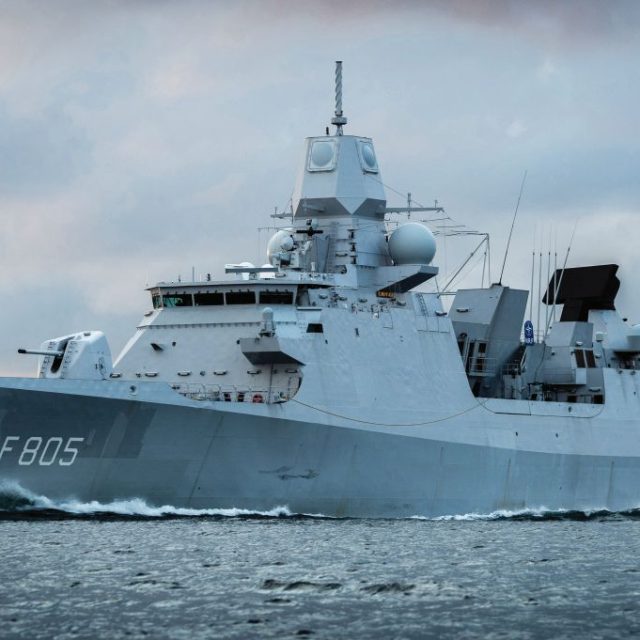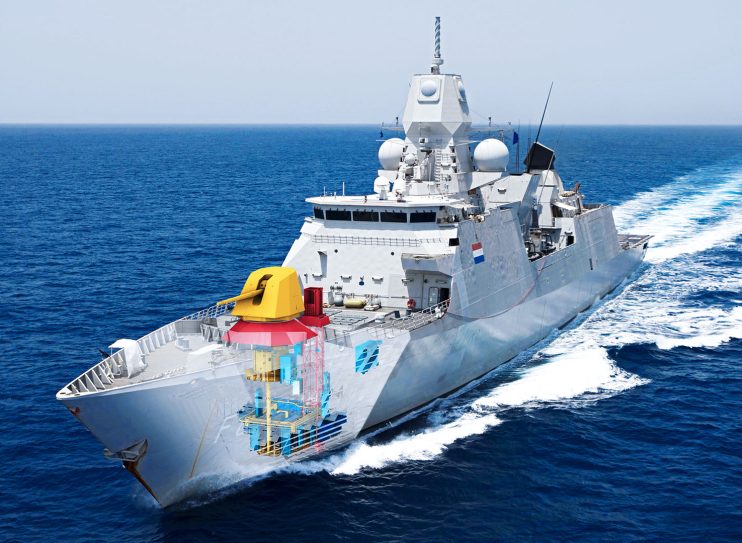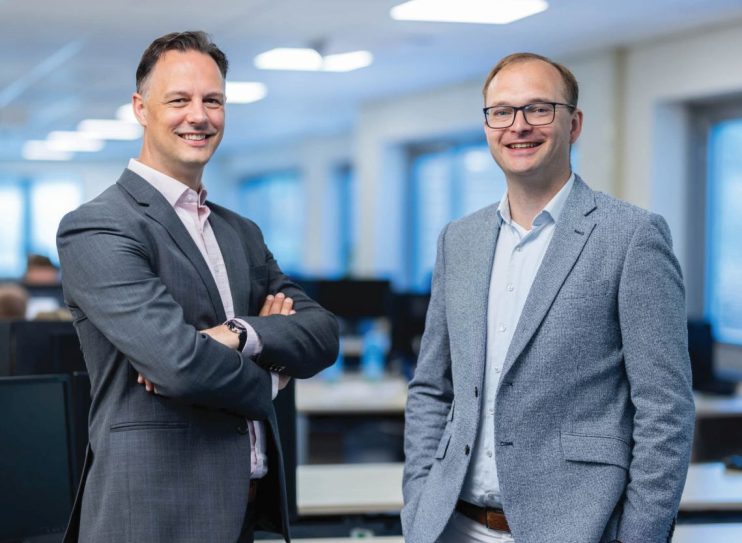
Nevesbu collaborates in unique trio on main gun replacement HNLMS Evertsen
The fourth Air Defence and Command Frigate (LCF) of the Ministry of Defence, the HNLMS Evertsen, is to be equipped with a brand new and modern main gun. The main gun (127mm) supplied by Italian manufacturer Leonardo will soon be capable of firing diverse types of ammunition. However, this renewal also requires the subsystems to be replaced and a significant adaption of the platform integration. In addition, a major redesign is needed. Nevesbu has been commissioned by the Defence Materiel Organisation (DMO) and Leonardo to ensure this is achieved.

For the successful realisation of this unique project, not one but two project managers from Nevesbu are responsible for the final result: Frank Schmedding and Jorn Houtsma. Frank’s role is to focus on the system design, as subcontractor of Leonardo. “In short: ensuring the system and all subsystems on board work as intended,” Frank adds. “This was quite a puzzle. We solved part of it by developing subsystems from scratch and ensuring the integration thereof.’’
The other fundamental part of the puzzle was handed to Jorn (Nevesbu/DMO). “The systems supplied by Leonardo and Frank’s expertise, must be fit on the platform.” In other words: detailed and specialised system integration. Jorn: “We adapted the platform so that all new systems can be connected and continue to meet strict military requirements. Including, for instance, rigidity during firing, shock resistance in the event of explosions and the overall strength of the structures.”
We have to devise the simplest solutions. But keeping it simple makes it complex.
It was not entirely unexpected that Nevesbu was asked to take on this challenge by the Ministry of Defence. Nevesbu was already involved in the feasibility studies at the preliminary stage, in which the pros and cons of potential suppliers were mapped out. Factors considered in this phase included the ease of integration, the extent of the necessary platform adaptions and whether the designs satisfied the set (military) requirements such as shock resistance during firing. When Leonardo emerged as the winner, it was no surprise that the Italian company, as weapons manufacturer, turned to Nevesbu for platform knowledge and customized solutions.
According to both project managers, the ‘client support and aftercare’, in addition to the broad and specific maritime knowledge, makes this way of working one of Nevesbu’s strong points. “We have now reached the stage in which the primary technical approach should best not be altered”, Jorn continues. “Should that be considered after all, it would be best to check with us first.”
This type of collaboration ensures any major issues and challenges on board are tackled in advance, thus relieving the Ministry of Defence of additional work thereafter. To cut a long story short: the complex puzzle on board a platform with limited integration space is 99 percent solved, which means the conditions for the LCF to immediately begin its work upon departure have been created.


All the knowledge is right here, under one roof
In the previous phase, the system design, Frank (Nevesbu/Leonardo) also set to work with that in mind. “We always had the same train of thought. How are the crew going to transport the ammunition, starting at intake while dockside, to storage on board to finally loading the main gun? Then, from here, and considering the health and safety regulations, you further deliberate the system requirements and (partial) solutions.”
In short: this is a two-sided assignment. As far as Jorn and Frank are concerned, it requires a distinction between the various tasks and disciplines within Nevesbu. “In both cases, it works well to get us involved,” says Jorn, who is engaged in the integration for DMO. “This way, we can easily communicate and align with each other. All the knowledge is right here under one roof. Also, for the interface, which we can realise efficiently.”
The biggest challenge?
That would be the limited physical space on the vessel. The various rooms for storing ammunition, the lift that brings it to the main gun, and all the control systems that have to fit seamlessly and function. And all in a room that is already fully fitted and where much has to be adapted. Furthermore, compliance with the stricter occupational health and safety legislation and health and safety during the integration of all systems must also be taken into consideration. For example, crew members on the HNLMS Evertsen will soon be permitted to lift only 15 kilograms, while the ammunition weights 32 and 18 kilograms, respectively. Nevesbu has developed auxiliary systems specifically for this task to avoid adjusting the capacity: a requirement of the Ministry of Defence.
Advanced ammunition handling
Leonardo’s 127mm main gun will replace the old artillery on the HNLMS Evertsen. The Ministry of Defence will soon be able to fire Vulcano ammunition from its LCF: much more advanced than its predecessor. Vulcano guided ammunition can be adjusted just before travelling towards the target.
Jorn: “The storage is split into two parts. Part is for the old ammunition for which Nevesbu has devised a new system. The supplier (Leonardo) devised the other part to load and transport new smart Vulcano ammunition to the lift automatically.” Another factor to keep in mind is that explosives an electricity in the vicinity of explosives can present a hazard. Frank: “The use of electricity would entail many and complex requirements, which is why we use air pressure. We have to devise the simplest solutions. But keeping it simple makes it complex.”
This Naval sector follows strict safety requirements for the integration of the main gun. And indeed, this is familiar ground for Nevesbu, Jorn continues. “We are used to dealing with demanding packages. It also depends on the space the vessel offers. We are fully aware that specific requirements will always apply. These are the very first things into which Frank and I immediately dig deep. By doing this, we already cover 95 percent of all risks in the initial phase.”
This form of collaboration pays off
The most unique thing about this project is that Nevesbu has split itself into two parties. Jorn and his team of engineers on behalf of DMO, Frank on behalf of Leonardo. Never before has Nevesbu worked in this type of formation. “We have never done this before, but I would like to work together in this way again’’, Frank reveals. “This is a project in which you try to sharpen the edges’’, Jorn continues. “Particularly in the interfaces, where the responsibilities of one directly affect the other. This is where the greatest risks lie and is why we were keen to represent both interests as Nevesbu.”
Frank agrees: “You have to keep each other sharp, sharper than usual, especially because communication has to be continual. I think we have succeeded well in this. In any case, we received positive feedback.”
In addition to the HNLMS Evertsen, the Ministry of Defence has another three LCFs. There may also be opportunities for Nevesbu to do the same with these. Frank: “The vessels are 95 percent the same, so we would have to identify that 5 percent difference. We examined this class generically and applied the system design to the first vessel. Jorn subsequently crafted the integration of all systems to make it specific. With this project, we have demonstrated our competence and proven that this form of collaboration really pays off.”
Would you like to know more about this project or Nevesbu's naval vessel services and experience?
